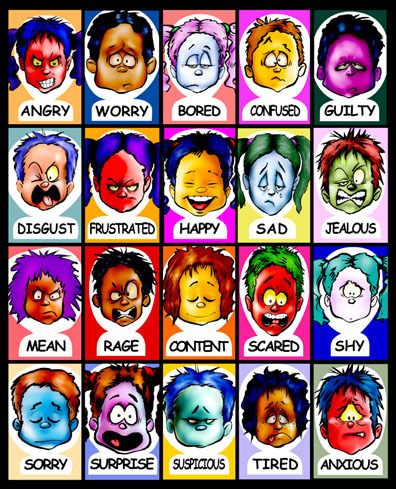S.B. Stewart-Laing's Blog, page 16
August 19, 2013
What Other Guys?: Mary Sue and the Entitlement Problem, Part I
 In a recent piece for The Atlantic, Luke Eppin ponders the connection between the fixation on 'self-esteem' in certain segments of American culture and the proliferation of media (particularly children's media) that emphasises character's self-actualisation over other attributes or goals. Although I disagree with one or two of the examples, and think there is definitely merit to the 'don't listen to the haters, go after your dreams' narrative, I do think his core thesis is right on target.
In a recent piece for The Atlantic, Luke Eppin ponders the connection between the fixation on 'self-esteem' in certain segments of American culture and the proliferation of media (particularly children's media) that emphasises character's self-actualisation over other attributes or goals. Although I disagree with one or two of the examples, and think there is definitely merit to the 'don't listen to the haters, go after your dreams' narrative, I do think his core thesis is right on target. My coauthor insists that part of my annoyance with these plots is that I come from what he calls ' The Scottish Hivemind'-- more precisely, from cultural backgrounds where the good of the group is as important (if not more so) than the good of the individual. More precisely, I think my annoyance stems from the fact that the character's goals-- which don't usually have any benefit to the group-- are supposed to be seen as a priority, and a good enough reason for the character bailing out on everyone around them.
Honestly, I think having the character pursue a 'weird' or 'impossible' goal which benefits the community-- maybe inventing an electric harvester or taking down the corrupt town government or building a library or whatever-- is immediately more sympathetic than a character pursuing some rather random 'self-actualisation' that separates them from the group. If it's established a character has a particular talent (more on that later) and their struggle is to get those around them to recognise it and help them succeed, that's somewhat different. However, having the character latch onto a fairly random goal just to prove that they're 'different' and 'special' and 'above' mundane jobs and hard work makes the character less of a talented misfit to root for and more of a spoiled brat.
Published on August 19, 2013 00:36
August 16, 2013
The Dramatic Haircut
 This week, the Atlantic ran an opinion piece about how women in movies or TV shows often get dramatic haircuts-- usually cutting their hair short-- to signify major trauma. While I'm not going to deny this is a widespread trope, I do disagree with the assertion that this is a symptom of lazy character writing and sexism.
This week, the Atlantic ran an opinion piece about how women in movies or TV shows often get dramatic haircuts-- usually cutting their hair short-- to signify major trauma. While I'm not going to deny this is a widespread trope, I do disagree with the assertion that this is a symptom of lazy character writing and sexism.First of all, the trope gets used regardless of gender. A scan through the TVTropes page has plenty of male examples. Obviously, in many cultures women are more likely to have long hair, so a cut is more dramatic. Plus men (typically) have the added ability to grow facial hair, which allows them to eschew a head-hair cut in favour of dramatic beard growing or beard-shaving.
Which brings us to point two: movies and television (and comics/graphic novels, where this trope also pops up frequently) are inherently visual media. The audience relies on externalised, visual cues to figure out how a character is feeling, and by necessity, we have things like characters changing their outfits, their hair, the lighting/decor of their homes as a reflection of their inner lives. In some ways, it's part of the medium.
Third, as the author of the article even points out with a few examples, dramatic haircuts run the emotional gamut from the character standing up for themselves (as symbolised by them making their own style decisions) to cleaning up their act (as symbolised by getting their hair back in order) to trauma (chopping off hair or growing a beard of sorrow). Of course, there are silly or over-the-top or badly played examples, but it's the writers and/or actors messing things up, not an inherent problem with the trope itself.
Finally, let's address the sexism theory:
But even when a dramatic haircut is done well, as it is on Girls and Mad Men, it still sends a troubling message: It seems to confirm that a woman's value lies in how she looks, and that only psychological instability would cause her to make a drastic change in her physical appearance.My feeling is that if you live in a society where, as a woman, you're told that your appearance has a distinct correlation with your worth as a human being (ie, practically every society portrayed in TVLand), you'll internalise that notion. We've got a zillion sociological studies as evidence that this happens in real life. So I don't see what's so strange about the idea that a character with less-than-awesome coping mechanisms (read: anyone in TVLand) would change her appearance in a negative way (ie, a home self-haircut, which is not usually not the best fashion plan for the untrained) to express her pain. So it's not the writer (or the trope) being sexist, but rather the writer/character/story portraying action/acting in the context of a sexist setting/society where a woman's appearance is a seen as a focal point.
Whew. Rant over.
Published on August 16, 2013 02:53
August 14, 2013
No Free Lunch
 Sticking to the rules in a speculative fiction universe is serious business. Because we're being asked to accept faster than light travel or winged unicorns or ancient Egyptian gods being real, we the audience need to know that the 'weird' elements of the fictional universe behave in a consistent manner.
Sticking to the rules in a speculative fiction universe is serious business. Because we're being asked to accept faster than light travel or winged unicorns or ancient Egyptian gods being real, we the audience need to know that the 'weird' elements of the fictional universe behave in a consistent manner.One of those elements of realism is the fact that there needs to limitations on the mad science or magic-- after all, there's no free lunch in real life, so there shouldn't be in Fantasyland. If there's no limitations or consequences associated with the cool stuff the characters can do, there's no real conflict.
The 'no free lunch' rule has to apply to main characters, and not just be a background formality. If, for example, a particular piece of magic ages the user by a decade, the main character had better age if they use it-- no hand-waving escape clauses just to preserve their good looks. The only exception is if an 'out' has already been well established in the story, and the character is simply remembering the trick they saw or heard about earlier.
Establishing consequences is about maintaining narrative suspense-- we know that something bad can happen to the characters we care about, and seeing them face the 'checks and balances' of their world in their pursuit of their goals is what keeps us reading.
Published on August 14, 2013 02:48
August 12, 2013
Filling In The Blanks
 Michael and I are lucky historical fiction writers-- a lot of the people in our time period left behind scads of diaries and personal letters, as well notes from the people who met them. But many historical figures we know only by their actions and by the people who documented them in words and images while they were still alive. The rest is left to our imaginations. So what to do?
Michael and I are lucky historical fiction writers-- a lot of the people in our time period left behind scads of diaries and personal letters, as well notes from the people who met them. But many historical figures we know only by their actions and by the people who documented them in words and images while they were still alive. The rest is left to our imaginations. So what to do?The simple answer is to fill in the blanks with whatever comes to mind. Personally, I think the best plan is to corral your imagination a bit and focus on making educated guesses based on the material that is available to you. Think about things like what societal attitudes and expectations the person would have grown up with, on a wide scale as well as within their family and immediate social group. You may be able to deduce some things about this person based on what the 'typical' citizen of your setting would know and believe and desire.
Once you have decided on some parameters, make sure your character is a coherent whole. Having someone who behaves both in character and appropriately for their time gives you realism, even when you're not entirely sure what the facts are.
Published on August 12, 2013 02:46
August 9, 2013
The Anatomy of a Lie
 '[correcting a lie is] like putting toothpaste back in the tube, except the toothpaste is alive and didn't like the tube.'
'[correcting a lie is] like putting toothpaste back in the tube, except the toothpaste is alive and didn't like the tube.'--Tom Philips
Lies and misconceptions abound in Fictionland, just as they do in the real world. However, with the exception of a few stories which use propaganda as a plot point, most of these lies seem easily corrected once people realise the main characters were right all along. One of the exceptions is the Harry Potter series-- the tabloid lies which start circulating in the fourth book are fairly persistent, and continue to cause trouble as the story progresses-- and I think it's a demonstration of Rowling's skill at worldbuilding.
How fast and how far misinformation can spread in your story depends on the level of information flow in your setting. In, say, rural 19th century Japan will probably not be able to spread gossip much further than their relatives in the next village over, while the same people, were they in the 21st century and equipped with smartphones, could spread the same rumour around the globe in the time it takes to type 140 characters.
While misinformation and gossip do turn up as temporary plot points, usually to show what a meaniehead one of the villains is, I think the spread of juicy fiction presented as fact can become a more persistent feature of a fictional world. Even if it doesn't directly concern the main character, it can be part of the fabric of the setting, as the characters read newspapers or scroll through their Facebook newsfeeds or catch up with a travelling salesperson about current events. The character's process of figuring out what details about important events are true or rumor could even be a major part of the plot.
Published on August 09, 2013 02:26
August 7, 2013
All the Feels!: Conveying Character Emotions, Part II
 When I was an undergrad, my coauthor and I jokingly devised the Lee-Cordova Scale of melodrama, based on the behaviour of two of our friends. The namesake of one end of the scale is notably stoic, and in fact once responded to being hit by a car by sitting up and asking if someone minded giving him a lift to the doctor. The namesake of the other end imbues her every experience-- even something as mundane as a trip to the school dining hall-- with emotional drama, and is happy to inform everyone about it.
When I was an undergrad, my coauthor and I jokingly devised the Lee-Cordova Scale of melodrama, based on the behaviour of two of our friends. The namesake of one end of the scale is notably stoic, and in fact once responded to being hit by a car by sitting up and asking if someone minded giving him a lift to the doctor. The namesake of the other end imbues her every experience-- even something as mundane as a trip to the school dining hall-- with emotional drama, and is happy to inform everyone about it. Although these two folks are extreme examples, I'm convinced everyone falls somewhere on the Lee-Cordova scale, and that their relative reactions to various events scale accordingly. For example, someone who responds to being in a road accident by calmly taking notes and photos and asking if everything is okay would be expected to remain equally calm if, say, they have a minor argument with their classmate. Conversely, someone who cries over Taylor Swift songs would be expected to have a full-scale meltdown upon actually being dumped by their significant other.
When a character does something which is wildly out of sync with their location on the Lee-Cordova Scale, there usually needs to be an explanation, even if it's implied or comes at a later time, and there definitely needs to be a reaction from the other characters (even if it's an explanation-- maybe they're not surprised because they knew all along Jim has a rabbit phobia).It's also worth noting that the explanation will have to be better-- both more credible and of greater emotional magnitude-- when the character displays an emotional response to something which is not only unexpected by also deemed socially inappropriate.
Actually, having the other characters react appropriately can make otherwise out-of-character behaviour seem more plausible, and help build up character complexity instead of undermining character development.
Published on August 07, 2013 01:32
August 6, 2013
Let's Talk About Our Feelings: Expressing Character Emotions, Part I
 Think about the last time you experienced a strong emotion-- it can be anything from elation to crushing boredom, as long as it was consumingly strong. Then think about what you said to anyone around you. Did you actually say 'I am mad?*'. Or did you talk about the situation in a more concrete way? Or address your 'secondary' emotions?
Think about the last time you experienced a strong emotion-- it can be anything from elation to crushing boredom, as long as it was consumingly strong. Then think about what you said to anyone around you. Did you actually say 'I am mad?*'. Or did you talk about the situation in a more concrete way? Or address your 'secondary' emotions?Probably, you mostly talked about specifics, with the occasional 'I'm so excited/frustrated/crushed/confused' thrown in for good measure. And that's how your characters should talk--unless they have a motivation to do so, it seems weird if your characters blurt out their innermost feelings in a direct way. (Even Walter Scott's annoyingly melodramatic puppets characters refrain from monologuing about their overwrought emotional states).
Instead, focus on the specifics your characters hone in on. For example, if your character is excited about visiting her family after a long journey, she might anticipate hugging her little brother, or watching a nostalgic movie with her mom, or gossiping with a favourite cousin. Or if a character is dreading a another day at his job, he might obsess over a series of inconveniences-- the rain, the smelly bus, his loud coworker-- that convey his overall mood. This holds true in dialogue as well. Someone is likely to innumerate their love interest's good qualities whilst gushing about them to a friend, rather than say simply that they're head over heels.
Also, don't underestimate the power of actions without dialogue or detailed internal narrative. For example character can energetically avoid someone with a minimum of internal narration about their feelings; many times context and word choice can convey motive without any additional internal monologue from the character. Compare:
Joe scuttled to his cubicle with his head down, hoping to avoid his boss' critical glare.
to this passage:
Joe scuttled to his cubicle with his head down, hoping to avoid being trapped into yet another inane conversation with his boss.
Without anything beyond a bit of context, we can establish anxiety in the first passage, and exasperation and boredom in the second. All without a single monologue about Joe's feelings!
*Once, when I was very young, I had been sent to 'time out' for some minor transgression and retaliated by writing my parents a note that said 'I am mad. You are bad' with a large angry face. I was livid when my parents were not hurt or enraged, but instead posted the note on the fridge.
Published on August 06, 2013 01:44
August 2, 2013
The Big Haul

One of those weird and often-overlooked logistical issues is how your characters haul things around. Some of this is on a large scale-- how to supplies or trade goods get from Point A to Point B? Some of this is on a smaller scale-- how does your character get their supply of ducks to market, or their massive supply of weapons to wherever they're headed?
For one thing, it's a good idea to think about how much the items actually weigh. Remember to think about things like armor or cold-weather clothing, which can be extremely heavy in their own right. This isn't just about the upper limits of what your character can physically lift and walk around with, although you should really think twice if your 'petite' Mary Sue character is happily skipping around with 2/3 of her own body weight in her travel pack (unless there's an in-universe explanation-- in which case, carry on). Hikers and backpackers generally say that a reasonable maximum load is 25% of one's body weight, although an athletic person (or someone hopped up on adrenaline) can carry a much larger weight for a short distance. There's also considerations whenever your character hops onto a load-bearing surface, such as a suspension bridge or an ice floe. Similarly, someone carrying an extremely heavy load may have trouble navigating squishy terrain like sand, snow, or mud, as they will sink in deeper and require more energy to take a step.
Once we've figured out how much weight your character can carry, we can then determine the physical limits of what they can bring along on their quest to save the world without enlisting the help of genetically modified llamas or magical bottomless backpacks or the like. This sets other limits for your characters, such as how many day's worth of food they have, and whether they can bring a backup katana. Again, remember that the 'stuff in the backpack' weight limit includes whatever the character is wearing, which can be a significant amount-- for example, if I put on traditional Highland dress and weapons (scaled to my height), I've already used up almost a quarter of my weight allowance. If I substituted chain mail or plate armour, I'd have used up almost 2/3 of my weight quota.
If you introduce a pack animal or the like, you've got a whole other set of concerns on your hands. Either way, I think imposing limits and challenges on your characters by using the mundane, practical considerations of your setting is a good way to keep the plot going (even if the character is trapped by the weight of their backpacks).
Published on August 02, 2013 02:03
July 31, 2013
Can't Buy Me Stuff
 “Certainly there are things in life that money can't buy, but it's very funny - Did you ever try buying then without money?”
“Certainly there are things in life that money can't buy, but it's very funny - Did you ever try buying then without money?”--Ogden Nash
I've complained before about characters who seem to maintain a comfortable lifestyle when there's no evidence they even hold a job (or, if they have a freelance one, zero indication they work nearly enough hours to support themselves). In the context of a cashless or low-cash society, this means characters who allegedly work on farms and yet do not spend any appreciable time on agriculture or animal husbandry. (Actually, this is a worse research failure than the first one-- while many people shirk their office jobs, a subsistence farmer must do hard physical labour for up to 14 hours a day or starve).
The associated problem is that characters-- particularly in Fantasyland and Urban Fantasy City-- seem to get by with an unusually low supply of cash. Sci-fi, as a genre, has a better track record of explaining such things, even in the more absurd or fantasy-leaning universes. For example the Doctor has used his sonic screwdriver on more than one occasion to get banknotes (or the equivalent) out of a cash machine; Ford Prefect, when unable to bill his expenses to his employer, whips out his trusty AmEx; the Star Wars universe is shown to have lively barter and cash economies both legal and illegal.
So it seems strange that a good portion of Fantasyland's citizens don't run into either the larger workings of the economy, or into immediate problems which require money to solve. The fact that their car always has petrol, there is always money for beer at the Generic Urban Fantasy Bar, and the fridge always has food (or the occasional mysterious moldy item, for all those troubled bachelor slobs) is always waved aside.
Realism issues aside, economics are an underused plot complication--I'd love to see an Urban Fantasy City detective evicted from their flat due to non-payment of rent (due to their absence of actual paid work). And whether you simply care about realism or plan to use the character's overdrawn bank account as a plot point, you can think about several things to get started:
Does your setting have a cash economy? If not, it could be a subsistence economy (such as subsistence farmers or hunter-gatherers) or a barter economy. What is the 'cost of living' in your setting? This includes everything from rent to beer at Fantasyland Tavern)How much is your character paid? (If it's cashless, how much labour do they have to put in gathering salt or digging potatoes or whatever one does in your setting?)
Published on July 31, 2013 01:45
July 29, 2013
Maintaining the Evil Empire
The Evil Empire which dominates many eras in Fantasyland seems to have a talent for longevity while being pointlessly evil.Real-life evil regimes are usually toppled when their citizens can no longer bear living under their thumb, or when they manage to anger the citizens and governments of neighbouring countries with general evildoing. Assuming that your evil empire isn't just evil in name only and actually rains misery down on its citizens, the big question is how this presumably unpopular government maintains power (at least until the main character shows up to rally the ragtag band of underdog rebels).
If your plot requires a long-lived evil empire, you should explore the logistics of how they stay in power. A number of speculative fiction books actually focus on this theme-- 1984, Brave New World, and The Hunger Games being some of the best-known examples. But there are certainly many ways you can develop your evil rulers. Just give it some good thought and you can have an opponent for your characters who is much harder to overcome than a generic Dark Lord.
Published on July 29, 2013 02:12



